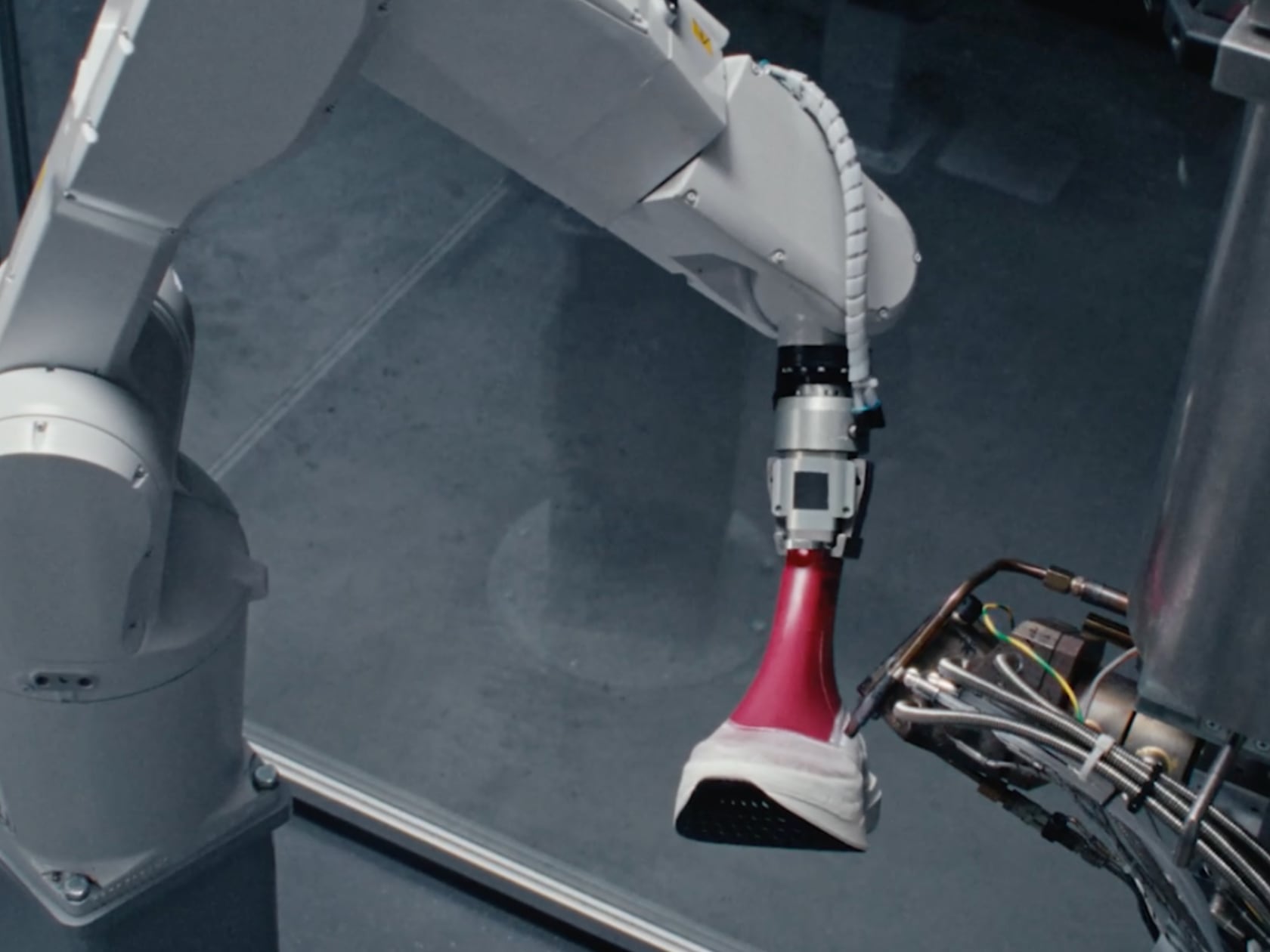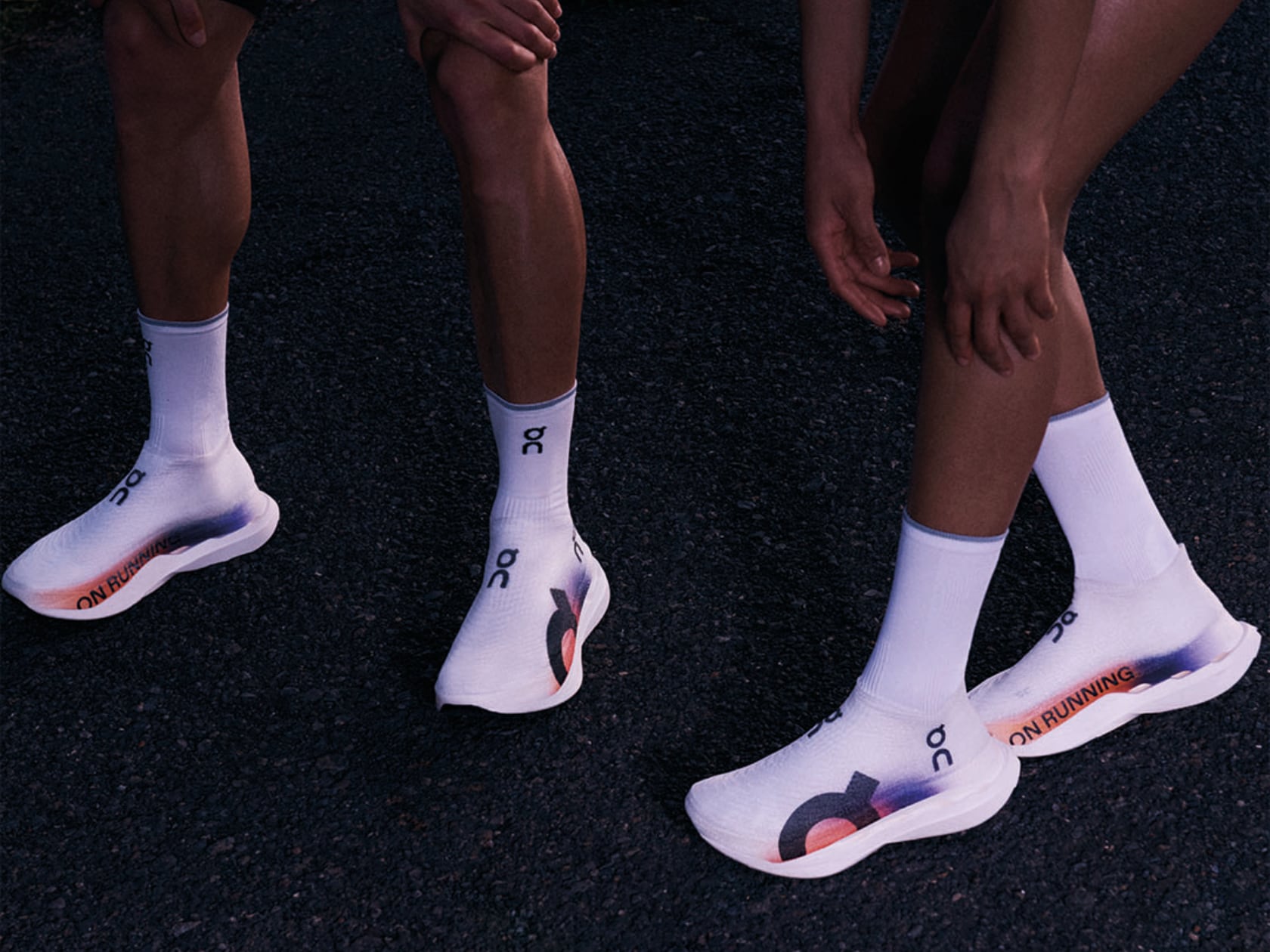
It’s impressive that many major brands have tried to create the perfect laceless sports shoe. While they’ve made significant strides, many have struggled with weight reduction in a world where weight reduction is highly sought after unless you’re a sumo wrestler or a defensive linebacker. Everything from phones, tablets, bags, and everyday carry items like multi-functional tools use advanced high-tech carbon fiber materials. So, why haven’t brands like Adidas focused more on shedding weight in their shoes? Let’s explore the approaches of On and Adidas in creating laceless sports shoes.
Designer: ON
Designer: Adidas
Comparing On Cloudboom Strike LS with Adidas’ Laceless Shoes
On has achieved a groundbreaking reduction in weight with its Cloudboom Strike LS. In contrast, Adidas has also made strides in laceless footwear but faces different challenges. Adidas’ N3XT L3V3L and other laceless models have focused on eliminating traditional components to improve fit and performance. However, these shoes have struggled with weight issues, making them less appealing for athletes seeking ultra-lightweight options.

Adidas N3XT L3V3L Futurenatural
Adidas’ N3XT L3V3L shoes feature a laceless design utilizing Primeknit and ForgeFiber technology to provide a snug fit. The Primeknit material offers flexibility and breathability, while ForgeFiber adds strength and support through strategically placed stitching. Despite these innovations, the shoes still face criticism for being relatively heavy compared to competitors like the Cloudboom Strike LS.

ON Cloudboom Strike LS
Adidas has invested years into developing laceless technology to create a seamless and secure fit for athletes. The Primeknit upper is designed to conform to the foot’s shape, providing a sock-like fit. However, the added weight of the materials and the complexity of the construction process have made it challenging to achieve the same lightweight performance as On’s Cloudboom Strike LS.

The Cloudboom Strike LS, with its LightSpray technology, offers a significant advantage in weight reduction. The thermoplastic material used in the shoe’s construction is lightweight yet durable, providing a snug fit without adding unnecessary bulk. This contrasts with Adidas’ approach, where the combination of Primeknit and ForgeFiber, while effective in fit and support, adds extra weight.

LightSpray™
The robotic application of LightSpray material allows On to create a precise and seamless upper, eliminating the need for additional components that can add weight. This streamlined construction produces a lighter shoe that enhances performance, particularly in long-distance running. The Cloudboom Strike LS weighs 170 grams (approximately 6 ounces) for a men’s size 8.5, while the Adidas N3XT L3V3L weighs around 454 grams (16 ounces). The Adidas X Ghosted+ football shoes weigh approximately 189 grams (6.7 ounces).

Adidas X Ghosted+ football shoes


The Spark of Genius that Led to LightSpray Technology
The Cloudboom Strike LS story began with a serendipitous moment and a burst of creativity. Yohannes, a key player in this tale, had the innovative idea of using a hot glue gun to create intricate, spider web-like structures. This simple yet brilliant concept evolved into employing a robotic arm to spray a thermoplastic material called LightSpray onto a shoe form, crafting a seamless, sock-like upper. The inspiration for this technology struck during a Halloween event, where a video showcased using a hot glue gun to create detailed spider web designs. This sparked the idea of rapidly creating textiles on complex shapes, with a shoe being the perfect candidate to test this novel method.
The development of the Cloudboom Strike LS was a journey filled with trial and error. What began as a simple idea evolved into a complex project requiring the collaborative efforts of designers, engineers, and various other experts. The team had to automate the process to turn this concept into reality. They programmed a robot to move the nozzle and spray the material, requiring meticulous calibration to ensure precise application. After a year of dedication and refinement, the project gained more resources and became a priority within On’s innovation department.
Design and LightSpray Technology
Its spray-on construction process characterizes the Cloudboom Strike LS. The shoe’s upper is made from LightSpray, a thermoplastic material applied using a robotic arm. This process creates a seamless, sock-like structure that eliminates the need for traditional components like laces and heel caps. The design is minimalistic and aerodynamic, emphasizing the shoe’s lightweight nature.
Thermoplastic materials are versatile plastics that become moldable upon heating and solidify upon cooling. In running shoes, thermoplastic materials such as thermoplastic polyurethane (TPU) and thermoplastic elastomer (TPE) are often used for their durability, flexibility, and ability to be recycled. These materials help improve running shoes’ fit, comfort, and performance by providing support and responsiveness. The robotic arm applies the thermoplastic filament precisely, ensuring an even and seamless construction that enhances the shoe’s structural integrity. Robotic technology ensures consistent quality and efficiency, allowing a rapid production time of just three minutes per pair. This innovation significantly reduces production time and waste, aligning with On’s commitment to sustainability.
Developing the Cloudboom Strike LS required extensive prototyping. The team went through thousands of prototypes, making minor adjustments each time to perfect the design. This rigorous process ensured that every aspect of the shoe, from fit to performance, met the highest standards. The ability to quickly produce and test new prototypes was a game-changer, allowing the team to innovate rapidly. The process involved programming the helix shape of the LightSpray material to ensure it fits perfectly around the foot. The team faced numerous challenges, such as determining how much material to use and where to apply it for optimal comfort and support. Each prototype was tested rigorously to ensure it met the needs of top athletes.
Fit, Comfort, and Performance Advantages
One of the critical features of the Cloudboom Strike LS is its remarkable comfort. The shoe is incredibly lightweight, with a men’s U.S. size 8.5 weighing just 170 grams. This makes it lighter than many other running shoes, helping you feel faster and more agile. The seamless design provides a more adaptable fit, allowing for greater freedom of movement. The shoe molds to your foot without laces, providing comfort and stability. This close fit can improve your performance by ensuring the shoe moves flawlessly with your foot.

Kenyan runner Hellen Obiri, who wore a prototype of the Cloudboom Strike LS to victory at the Boston Marathon, highlights the shoe’s high-performance capabilities and comfort. Her success demonstrates the shoe’s potential to enhance athletic performance at the highest levels.

The Cloudboom Strike LS is designed to give athletes a competitive edge. The midsole combines responsive foam rubber with a carbon-fiber plate. This combination provides cushioning and propulsion, ensuring each step feels springy and efficient. The shoe supports efficient energy transfer, which is crucial for long-distance running. The Helion Hyper Foam midsole is a key feature of the Cloudboom Strike LS. This responsive foam, combined with a carbon-fiber plate, provides cushioning and propulsion, enhancing energy transfer with each step. The midsole’s design is crucial for long-distance running, offering comfort and performance. The shoe’s 39mm stack height and 4mm drop contribute to stability and support during competitive running.
Sustainability
On is committed to sustainability, and the Cloudboom Strike LS reflects this dedication. The production process minimizes waste and uses fewer materials. The thermoplastic filament used in the shoe’s construction can be melted down and reused, further reducing environmental impact. The quick production time, only three minutes, means that athletes could potentially have customized shoes made on the spot, tailored to specific race conditions. This adaptability is particularly beneficial for athletes who compete in various environments, ensuring their footwear is continually optimized for performance.

Adidas, too, has made significant strides in sustainability. The brand has committed to achieving climate neutrality across its operations by 2050, with intermediate goals such as reducing greenhouse gas emissions by 30% across its value chain by 2030 and ensuring 90% of its products are sustainable by 2025. Adidas collaborates with partners like Parley for the Oceans. It engages in circular initiatives such as the “Made to be Remade” product line, which involves recycling worn-out products into new ones—Adidas’ FUTURECRAFT.FOOTPRINT, developed in collaboration with Allbirds, boasts one of the lowest carbon footprints in the industry, demonstrating the brand’s commitment to environmental responsibility.
Real-World Success and Future Prospects
The Cloudboom Strike LS has already proven its value in high-stakes competitions. Hellen Obiri’s success at the Boston Marathon provides real-world evidence of the shoe’s benefits. These shoes’ success in top competitions makes them a trusted choice for other competitive athletes.

It aims to make these advancements accessible to a broader audience. Plans to release the Cloudboom Strike LS to consumers later this year indicate the brand’s commitment to bringing cutting-edge technology to everyday athletes.
Your Thoughts
We’ve seen how the Cloudboom Strike LS combines innovative design, comfort, performance, and sustainability. The sleek and seamless upper, created from LightSpray, eliminates traditional components like laces and heel caps, providing a glove-like fit. Robotic technology ensures a precise and efficient production process, while the Helion Hyper Foam midsole enhances cushioning and energy return.

As we look forward to its consumer release, we’d love to hear your thoughts. Does the idea of a spray-on sneaker with a seamless fit appeal to you? The technology behind the shoe offers a unique advantage by ensuring the upper fits snugly and comfortably around your foot, potentially improving performance and reducing the risk of blisters. How important is sustainability when choosing your running gear? On’s commitment to using recyclable materials and minimizing waste aligns with growing environmental concerns in sportswear.






